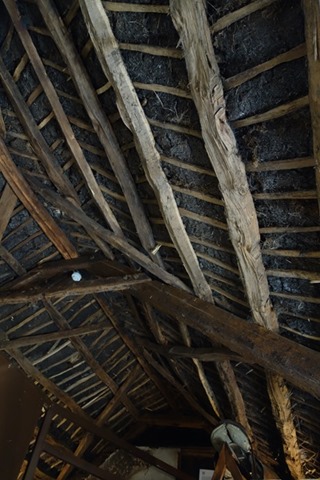Just outside the seaside resort of Castlerock, Hezlett house is an early cruck built timber frame dating from 1691, making it one of the oldest vernacular domestic buildings in Northern Ireland. Originally built as a parsonage, the house was taken over in 1761 by a Presbyterian farmer, Isaac Hezlett, whose family continued to live there until the National Trust acquired the property in 1976.
The walls are built of uncoursed rubble with roughcast and a core of earth and sand. The house is particularly interesting for its cruck construction, a form not often seen in Northern Ireland at this date. Several areas in the house are left bare to expose the cruck trusses and other structural details.
The original house has been extended and looks like two dwellings. In fact the left side was an extension built for the owner’s widowed mother – a type of “granny flat”. But the Trust has fitted it out as a single Victorian farmstead. Some of the furnishings are from the house itself while others have been acquired from elsewhere.
The first room visited is the kitchen
The Parlour
Then upstairs – watch your head!
The maid’s bedroom
This windowless room in the rafters is where the farm “servants” would have slept
It’s likely that the farm labourers living here were children – many of them probably orphans who were “farmed out” to work as agricultural labourers. Just like one of my great grandfathers, who was born in 1857 in Liverpool. He was orphaned in 1866 when he was only 9 years old and turns up on the 1871 census in Halsall near Southport working as a “farm servant”.
A view of the rafters in the next part of the building
Back downstairs now. A shot showing the cruck frame construction method
The building doesn’t have foundations and is supported by pairs of curved timber, joined by a cross beam, which support the roof.
One of the two rather small downstairs bedrooms
The nursery
The parlour
Being quite small, the house didn’t take too long to look around, but it gave a good impression of how an Irish farming family and their servants would have lived during the Victorian period.











